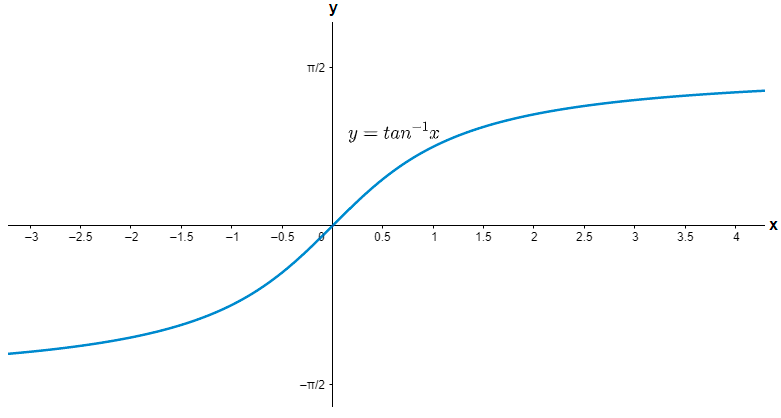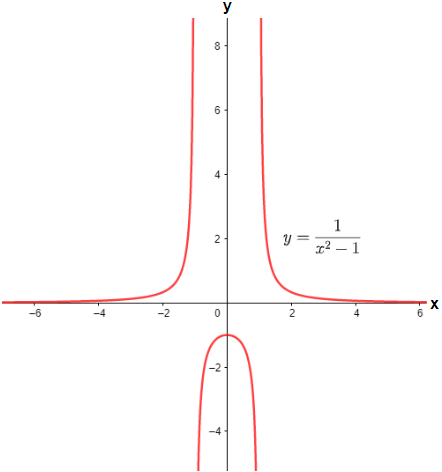
What are some examples of unbounded functions?
Answer
515.1k+ views
Hint: Here, first we will understand the meaning of bounded and unbounded functions. Now, to find the examples of these functions check if the value of the function does not go below or exceed above some particular real values. If there exist some particular values then that will be an example of a bounded function and if there does not exist any such particular value then that will be an example of an unbounded function.
Complete step-by-step solution:
Here we have been asked to write some examples of unbounded functions. First we need to know about bounded and unbounded functions.
In mathematics, a function $f\left( x \right)$ is said to be a bounded function if there exist some real value K such that $\left| f\left( x \right) \right|\le K$ for all real values of x on which the function is defined. It may be possible that there are two real values P and Q such that $P\le \left| f\left( x \right) \right|\le Q$. Here, P is called the lower bound of the function and Q is called the upper bound of the function. The mathematical inequality is stated as $f\left( x \right)$ is bounded below by Q and bounded above by P. A real valued function is bounded if and only if it is bounded from above and below. For example: - $\sin x$ is a bounded function because $-1\le \sin x\le 1$ and similarly $\cos x$ is also a bounded function. Other examples of bounded function are: - $\dfrac{1}{{{x}^{2}}+1}$, ${{\tan }^{-1}}x$ etc. Let us see the graph of some bounded functions from the above examples.

Here the range of the function $\dfrac{1}{{{x}^{2}}+1}$ is given as $\left( 0,1 \right]$.

Here the range of the function ${{\tan }^{-1}}x$ is $\left( -\dfrac{\pi }{2},\dfrac{\pi }{2} \right)$.
Now, a function which is not bounded from above or below by a finite limit is called an unbounded function. For example: - $x$ is an unbounded function as it extends from $-\infty $ to $\infty $. Similarly, $\tan x$ defined for all real x except for $x\in \left( 2n+1 \right)\dfrac{\pi }{2}$ is an unbounded function. Other examples of unbounded function can be: - $\dfrac{1}{x}$, $\dfrac{1}{{{x}^{2}}-1}$ etc. Let us see the graphs of some unbounded functions from the mentioned examples.


In the above two graphs we can see that the range of both the functions can be given as $\left( -\infty ,\infty \right)$.
Note: You can also understand the meaning of bounded and unbounded functions graphically. If we can draw two horizontal lines that define the upper and lower bound of a function, then that function can be called a bounded function. Now, if the graph of a function keeps on increasing or decreasing without any limit and we cannot draw any such two horizontal lines then that function will be called an unbounded function.
Complete step-by-step solution:
Here we have been asked to write some examples of unbounded functions. First we need to know about bounded and unbounded functions.
In mathematics, a function $f\left( x \right)$ is said to be a bounded function if there exist some real value K such that $\left| f\left( x \right) \right|\le K$ for all real values of x on which the function is defined. It may be possible that there are two real values P and Q such that $P\le \left| f\left( x \right) \right|\le Q$. Here, P is called the lower bound of the function and Q is called the upper bound of the function. The mathematical inequality is stated as $f\left( x \right)$ is bounded below by Q and bounded above by P. A real valued function is bounded if and only if it is bounded from above and below. For example: - $\sin x$ is a bounded function because $-1\le \sin x\le 1$ and similarly $\cos x$ is also a bounded function. Other examples of bounded function are: - $\dfrac{1}{{{x}^{2}}+1}$, ${{\tan }^{-1}}x$ etc. Let us see the graph of some bounded functions from the above examples.

Here the range of the function $\dfrac{1}{{{x}^{2}}+1}$ is given as $\left( 0,1 \right]$.

Here the range of the function ${{\tan }^{-1}}x$ is $\left( -\dfrac{\pi }{2},\dfrac{\pi }{2} \right)$.
Now, a function which is not bounded from above or below by a finite limit is called an unbounded function. For example: - $x$ is an unbounded function as it extends from $-\infty $ to $\infty $. Similarly, $\tan x$ defined for all real x except for $x\in \left( 2n+1 \right)\dfrac{\pi }{2}$ is an unbounded function. Other examples of unbounded function can be: - $\dfrac{1}{x}$, $\dfrac{1}{{{x}^{2}}-1}$ etc. Let us see the graphs of some unbounded functions from the mentioned examples.


In the above two graphs we can see that the range of both the functions can be given as $\left( -\infty ,\infty \right)$.
Note: You can also understand the meaning of bounded and unbounded functions graphically. If we can draw two horizontal lines that define the upper and lower bound of a function, then that function can be called a bounded function. Now, if the graph of a function keeps on increasing or decreasing without any limit and we cannot draw any such two horizontal lines then that function will be called an unbounded function.
Recently Updated Pages
Master Class 11 Business Studies: Engaging Questions & Answers for Success

Master Class 11 English: Engaging Questions & Answers for Success

Master Class 11 Computer Science: Engaging Questions & Answers for Success

Master Class 11 Social Science: Engaging Questions & Answers for Success

Master Class 11 Maths: Engaging Questions & Answers for Success

Master Class 11 Biology: Engaging Questions & Answers for Success

Trending doubts
One Metric ton is equal to kg A 10000 B 1000 C 100 class 11 physics CBSE

Explain zero factorial class 11 maths CBSE

An example of chemosynthetic bacteria is A E coli B class 11 biology CBSE

State the laws of reflection of light

What is 1s 2s 2p 3s 3p class 11 chemistry CBSE

Which one of the following is not a method of soil class 11 biology CBSE




